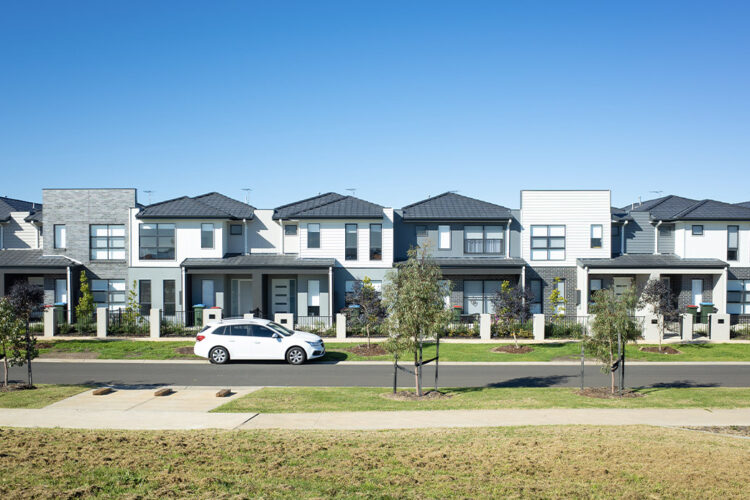Australia’s momentous start to the 2023 spring selling season has seen listings increase as if we’re beginning to see the shoots of a balanced property market sprouting.
“With this spring shaping up to be busier than last, supply and demand dynamics are likely to continue rebalancing in the coming months,” explained Eleanor Creagh, PropTrack senior economist.
Data from research firm CoreLogic has painted a picture of increased auction activity in recent months, with the week ending 24 September 2023 shaping to be the nation’s busiest under the hammer of the year so far. Ms Creagh said this trend of increased sales activity means “choice has improved significantly in the major capitals, with buyers benefiting from the rush of properties hitting the market”.
Running in line with increased sales activity has been the Reserve Bank of Australia’s (RBA) decision to hold the official cash rate for three consecutive months between July and September, and eight consecutive months of property value increases – the longest stretch of growth since the pandemic, according to Ms Creagh.
She revealed the subdued listings environment from earlier this year was a primary driver of the home price recovery.
“The limited flow of new listings coming to market in the first half of 2023 meant buyers were competing over fewer properties,” Ms Creagh said.
“In face of such a substantial reduction in borrowing capacities and deterioration in affordability, the fast turnaround in home prices has been an unusual occurrence, and a testament to the strong demand from buyers,” she added.
But, as spring began to sprout, the listing environment shifted. New listings rebounded in August in Sydney, up 18.4 per cent year-on-year, and Melbourne, up 20.8 per cent year-on-year, as both cities experienced their busiest end to winter in more than a decade.
The listings upswing hasn’t been isolated in the nation’s two most populated cities, as activity increased in other capital cities, notably throughout July, though unlike Sydney and Melbourne this momentum eased in the final month of winter.
“Improved seller sentiment has been a key driver of the increase in listings, with confidence springing as interest rates remain on hold amid positive market conditions,” Ms Creagh added.
Auction volumes increased in August and September, even as clearance rates began to ease.
However, it’s not just sales occurring under the hammer that has increased, with Ms Creagh explaining: “Sales volume has also picked up, especially in Sydney where sales volumes increased 24 per cent year-on-year in August, with both buyer and seller confidence on the rise.”
With this spring selling season shaping to be busier than last year’s, which was hindered by rising interest rates and soaring inflationary pressures tightening the budgetary belts of Australians nationwide, Ms Creagh explained it’s not all smooth sailing.
“The uptick in the number of properties coming to market will challenge the extent of buyer demand as the selling season continues to unfold.”
“There is a possibility that home buying demand is able to absorb the uplift in new stock coming to market, given interest rates have peaked, the labour market remains tight, and population growth remains strong,” she added.
She revealed: “There are already signs this may be the case, and although there has been a pick-up in listing activity heading into spring, buyer enquiries have also increased.”
According to her, the average number of enquiries per for sale listing held firm in August, indicating buyer demand is rising in line with an increased number of properties coming to market.
“However, with the flow of new listings having rebounded so significantly in Sydney and Melbourne, and likely to continue to do so, the pace at which prices have grown this year could still slow,” Ms Creagh said.
Even with prices rising, she believes “the significant uplift in the volume of stock listed for sale gives buyers more choice and more bargaining power.”
But, outside of Sydney and Melbourne, a different story is unfolding.
In Hobart, buyers have enjoyed greater choice for much of the year. The same goes for Canberra, with both cities experiencing a level of available properties in line with the decade average.
Ms Creagh stressed “market conditions in Perth have never been more competitive” given total stock on the market is near record lows.
“This strong competition is likely one reason why Perth has overtaken Adelaide as the strongest performing capital city market over the past year, as buyers compete for limited options and affordability is less constrained,” she added.
Similarly competitive market conditions have unfolded in Brisbane and Adelaide.
“Price growth is likely to remain stronger in the smaller capital city markets of Perth, Adelaide and Brisbane, where choice remains limited and demand is bolstered by housing remaining comparatively affordable, as well as tight rental markets and both interstate and overseas migration,” she explained.
In Sydney and Melbourne, the pace of growth may slow with shifting market conditions while the uptick in choice for buyers “likely bringing more balance to supply and demand conditions as options for buyers improve”.
“Meanwhile, Hobart and Canberra have seen more balanced conditions for many months and are already recording slower growth and recouping the price falls of 2022 at a much slower pace,” Ms Creagh said.
She envisions a future where home prices are likely to continue rising in light of the cash rate remaining on hold, meaning “affordability will continue to deteriorate, though not at the same pace as over the past 18 months, with price growth partially offset by growth in household incomes and wages”.
Ms Creagh concluded: “Home prices in 2024 will also be influenced by whether interest rates begin to move lower. Many expect interest rates will be cut at some point in 2024, causing borrowing capacities to increase and mortgage servicing costs to decrease, like fuelling a continued rise in prices.”


